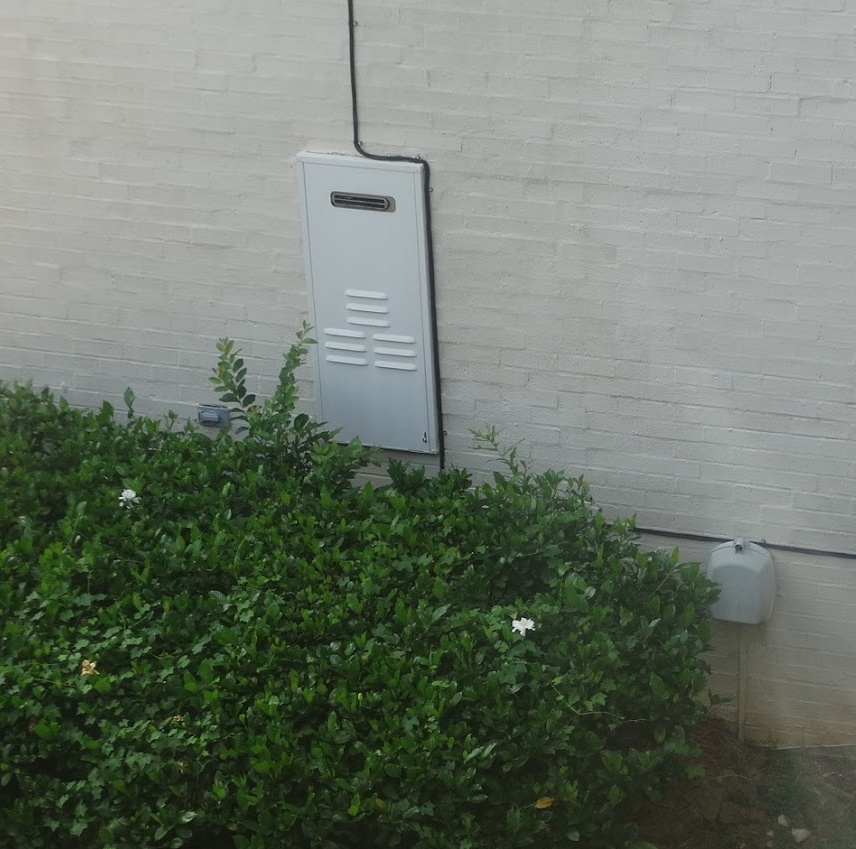Unfortunately, homes are designed and built every year with the heating and cooling equipment, the water heater, and/or the electrical equipment in the building’s hottest (or coldest) and most impractical zone. Call it habit or laziness, it’s puzzled me for years.
Specifically, I’m talking about the decision to install a tankless water heater in your attic. The manufacturer recommends it be installed in an accessible location. I know attics. They’re not very accessible. They’re full of trip hazards and bugs; most have mice, poor lighting (if any), and, in the south, they’re hot as a forest fire! Did I mention they aren’t very accessible?
Here’s what makes the attic so wrong and what you can do about it.
Why It Matters

Most tankless water heaters have an LED (digital) display on the front of the heater. The display is where you adjust the water temperature and is ground zero for monitoring the system’s health. For example, you’ll want to monitor the display if you have hard water. Minerals in the water will collect on the heat exchanger. The heater will sense the restriction and display the need to descale the heat exchanger. Other issues may include potential ignition failure, a blocked exhaust or air inlet, or a system overload.
This water heater must be inspected annually by a trained and qualified professional. Repairs and maintenance shall be performed by a trained and qualified professional. The trained and qualified professional must verify proper operation after servicing. It is imperative that control compartments, burners, condensate collection and disposal system, vent screens and circulating air passageways of the appliance be kept clean.
Rinnai Maintenance Manual
Error Codes

Information about the water heater’s function is sent to the display as “error codes.” Each manufacturer has its own set of codes. Don’t look for a Rinnai code sequence to match a Noritz brand code sequence. You should find an index to the codes in your operations manual. I talk about the Noritz Error Code 14 here.
When your tankless water heater is inaccessible, you can’t visually monitor the display, perform maintenance, or set the temp without going into the attic.
Manufacturers also build tankless heaters designed to be installed outside your home. They’re also not accessible without physically removing a cover.
Don’t plant shrubbery in front of the tankless water heater, as it blocks access for maintenance and care.
Remote Controller
Whether you have an outside model or your water heater is installed in the attic, there is a helpful solution. Most manufacturers offer a remote controller.
The remote controller allows you to keep track of the heater’s function, no matter where the equipment is located. The most common location is a room you’re in daily, the primary bathroom or closet. Other common areas include hallways, the laundry room, and the kitchen.
Some model water heaters (Rinnai) allow multiple remotes. The controller should be out of reach of small children. Avoid locations where the controller may become hot (near the oven or radiant heater). Avoid locations in direct sunlight; it may be difficult to read. Avoid locations where the temperature controller could be splashed with liquids. Do not install it in locations where the public can adjust it.1Installation Manual for the Exterior Model
Rinnai also offers a model heater with a wireless remote feature connected to a circulation pump in the unit. The pump can be activated via a smartphone app or another smart home device (see video below).
Here’s a video about the Noritz controller. It requires a “hard wire” to be installed from the heater, through the wall, to the controller. NOTE: If installing the controller in a finished home, contact a licensed electrician with experience pulling wire inside walls.
Bottom Line
If you’re building a new home, consider asking the builder to locate the water heater in the garage or some other accessible room, where every day, as you come and go, you can monitor its health. If an accessible space isn’t an option, I recommend installing a remote controller to help you “listen” to your water heater. It’s much more practical, and you’ll save money on maintenance.
References
This Article's Footnotes/References
- 1
- - - - - - - - - - - - - - - - - - - - -